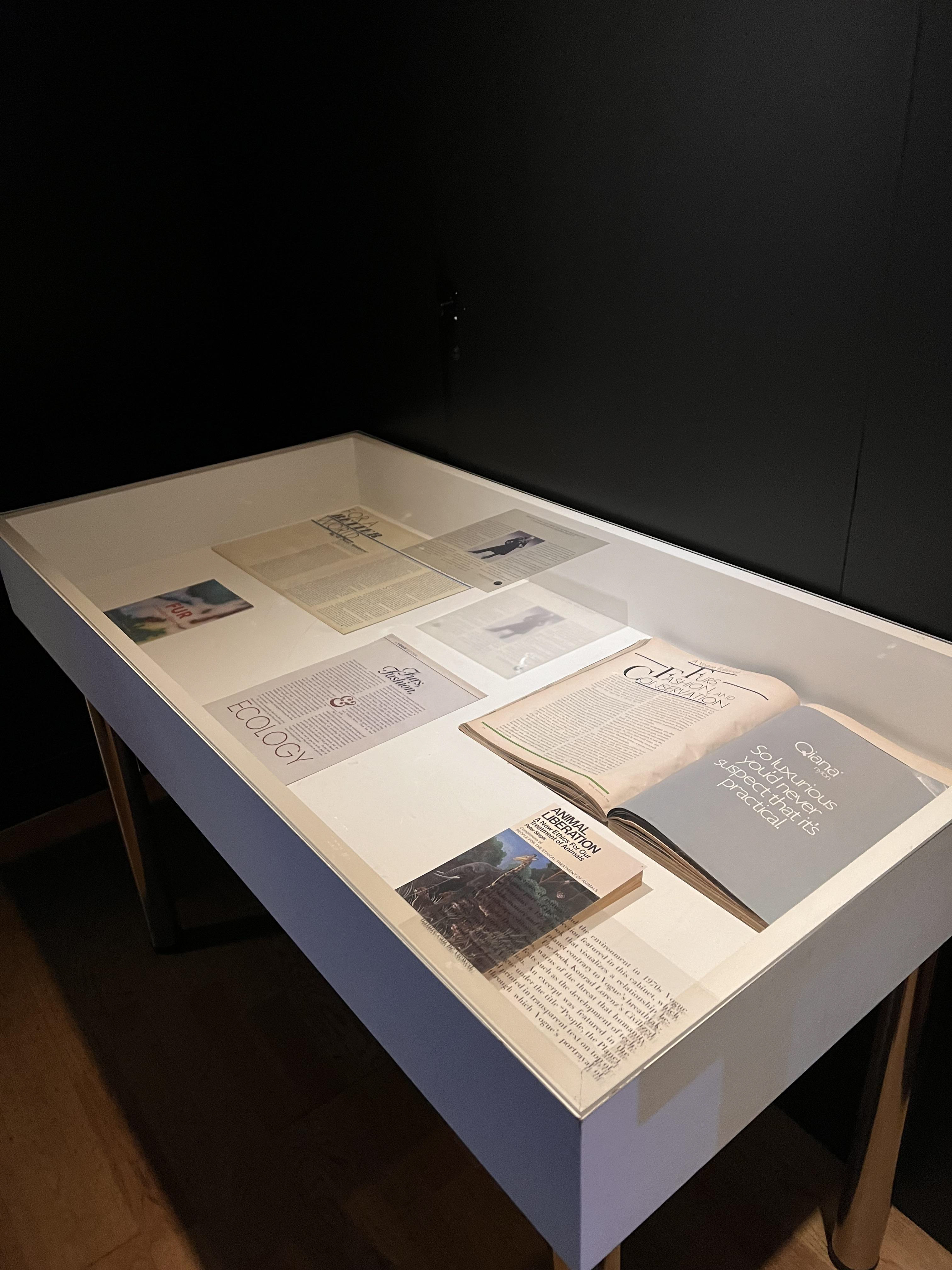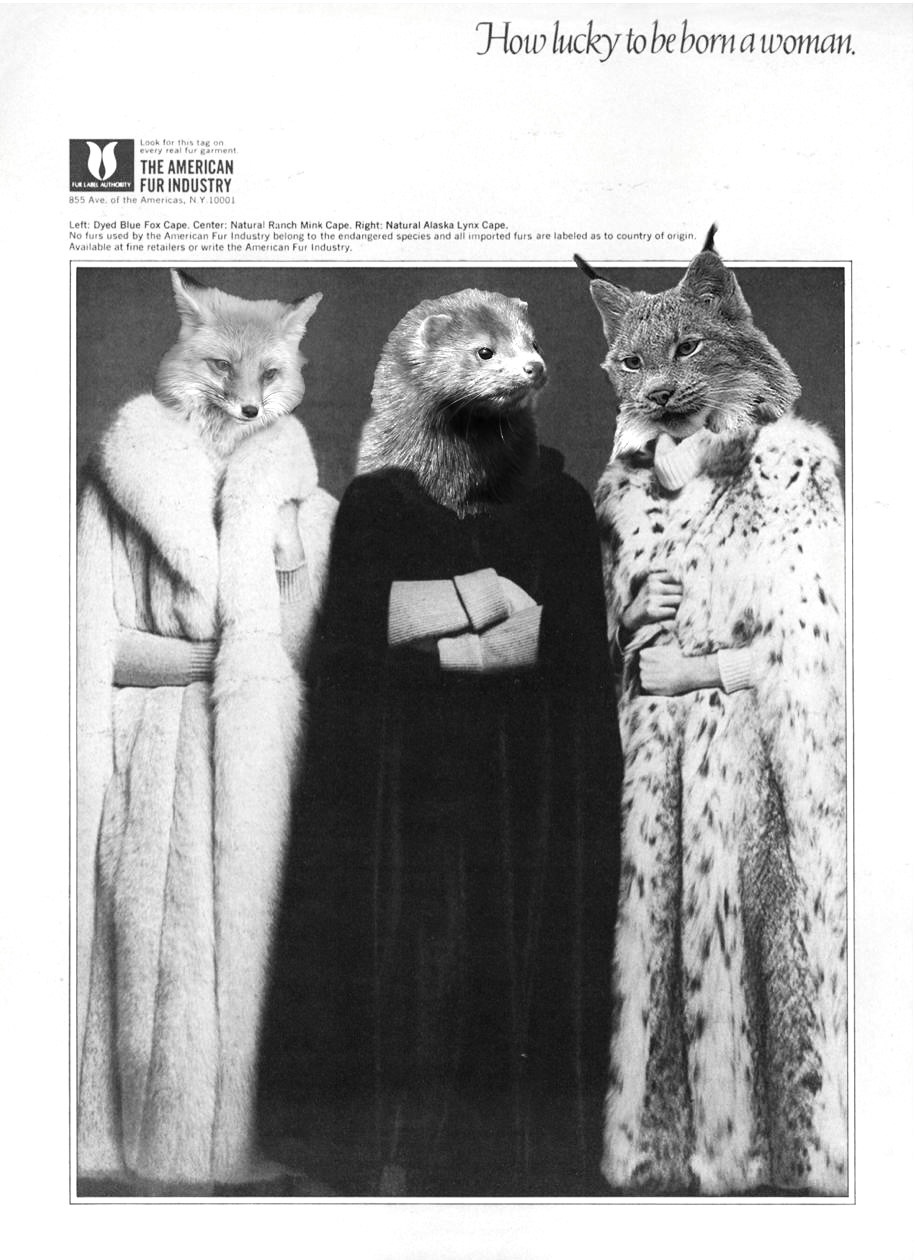



Human Nature investigates the conflicting narratives of environmental consciousness and the promotion of unsustainable materials and practices featured in Vogue
US through the 1970s. During a period of burgeoning environmental awareness, Vogue centers on humanity. situating its reader above nature to underscore conservation claims. Teats that warn of the downfall of the planet due to human impact appear alongside breathtaking landscapes in editorials that prompt reconsideration of quotidian living practices. Simultaneously, the shameless appeals to human desire through playful and persuasive language in anthropocentric advertisements elevate synthetic materials, like rayon and polyester while upholding the influence and status of ever-detrimental fur.
Vogue's publicization of this duality positions the reader with full buying and moral authority, but also leaves the reader questioning fashion ethics and what holds more value in a time where environmental and economic tensions are beginning to heighten.
Through Human Nature, viewers are invited to immerse themselves in the (pre/sustainability discourses of the 1970s. We have created an installation that allows viewers to interact with visual and textual layers used to rationalize unsustainable practices within advertisements and editorials in Vogue. While listening to soundbites from environmental and ethical protests including inaugural Earth Day events, viewers can engage with the lightbox to reveal the linguistic layers embedded in spreads and advertisements from the magazine that are displayed on two sets of transparent paper. One is composed of advertisements, and the other is a curated collage of imagery and text that has been intentionally plucked from each advertisement to indicate our interpretation of the ecological dialogue that appears in Vogue. The viewer is invited to piece each pair of sheets together like a puzzle, thereby unveiling the hidden motifs communicated within the magazine.
We encourage our audience to explore these motifs, in addition to the primary and secondary literature in the cabinets, to understand the competing ideologies of conservation and consumption that reflect environmental perspectives in the 1970s.
The viewer is invited to slide the text overlays onto the corresponding image to highlight specific words that convey the sentiment within the magazine.
The cabinet contains articles from issues of Vogue from the 1970s centered around animals, fur, and conservation, and it is supported by two secondary sources. Animal Liberation, authored by Peter Singer in 1975, advocates for the equal consideration of animals and humans based on their shared experience of suffering and the adoption of a vegan or vegetarian diet. His writing is said to have eventually led to the foundation of People for the Ethical Treatment of Animals (PETA), one of the leading global animal rights organizations. Jonathan Fiers’ Fur: A Sensitive History (2020) explores the historical significance of fur from a contemporary point of view, and can assist readers in exploring the often contradictory dialogue perpetuated by 1970s Vogue around its usage.
Depictions of nature and the environment in 1970s Vogue comprise part of the selection featured in this cabinet, which also contains a 1973 book that visualizes a relationship between humanity and the planet contrary to Vogue’s breathtaking landscape editorials. The book, Konrad Lorenz’s Civilized Man’s Eight Deadly Sins, warns of the threat that humanity poses to nature through feats such as the development of technology and overpopulation. An excerpt was featured in the April 1974 edition of Vogue under the title “People, the Planet Eaters” and can be found printed in transparent text on top of the cabinet as a filter through which Vogue’s portrayal of nature can be viewed.